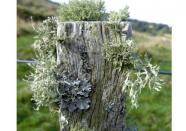Dyes are a treasure
Aim
To understand that the first dyes discovered were made from natural substances and were often highly valued.

Stephen Williams.
Dyes have been used by many cultures. When dyes were first discovered, they were made from natural substances. These dyes were made from shrubs, trees, and lichens. Lichens growing on pavements are pale green. Some lichens found on rocks are orange. Lichens produce brightly coloured substances that protect them against sunburn, insects and shellfish. In the same way that the coloured tāniko of cloaks were made for our chiefs, dyes were often made for chiefs in other cultures. Such dyes include:
- Red madder: Tutankhamen in ancient Egypt had clothes dyed using a red dye, which was made from the roots of a plant called madder. Red madder belongs to the same family of dyes as raurekau.
- Tyrian purple: Kings, nobles and church leaders in Europe once used purple dyes made from sea snails. It took 8,500 of these shellfish to produce one gram of the dye. This dye was worth more than its weight in gold!
- Red cochineal: The Mayan and Aztec people of Mexico discovered this bright red dye. Cochineal is obtained from insects that live on the prickly pear cactus. One kilogram of cochineal dye can be obtained from about 200,000 insects. Produced by indigenous people, cochineal soon became Mexico's second most valued export after silver. Today this dye is produced in other countries and is used in food colouring. You have probably eaten it!
